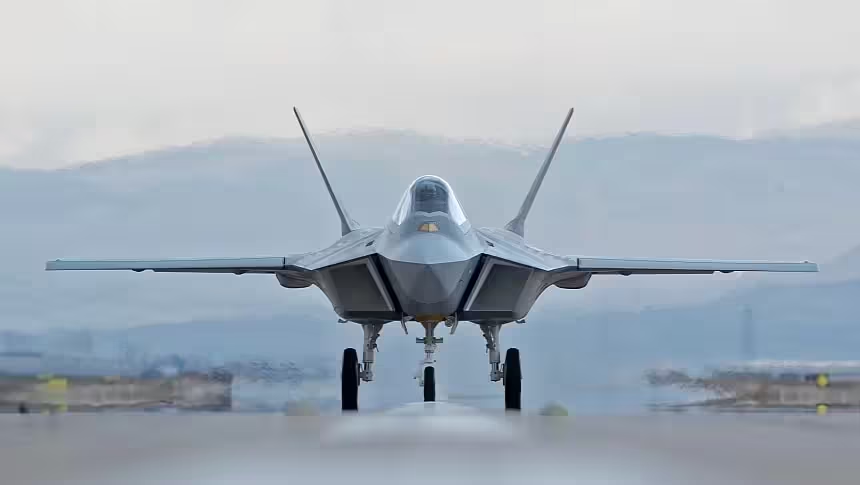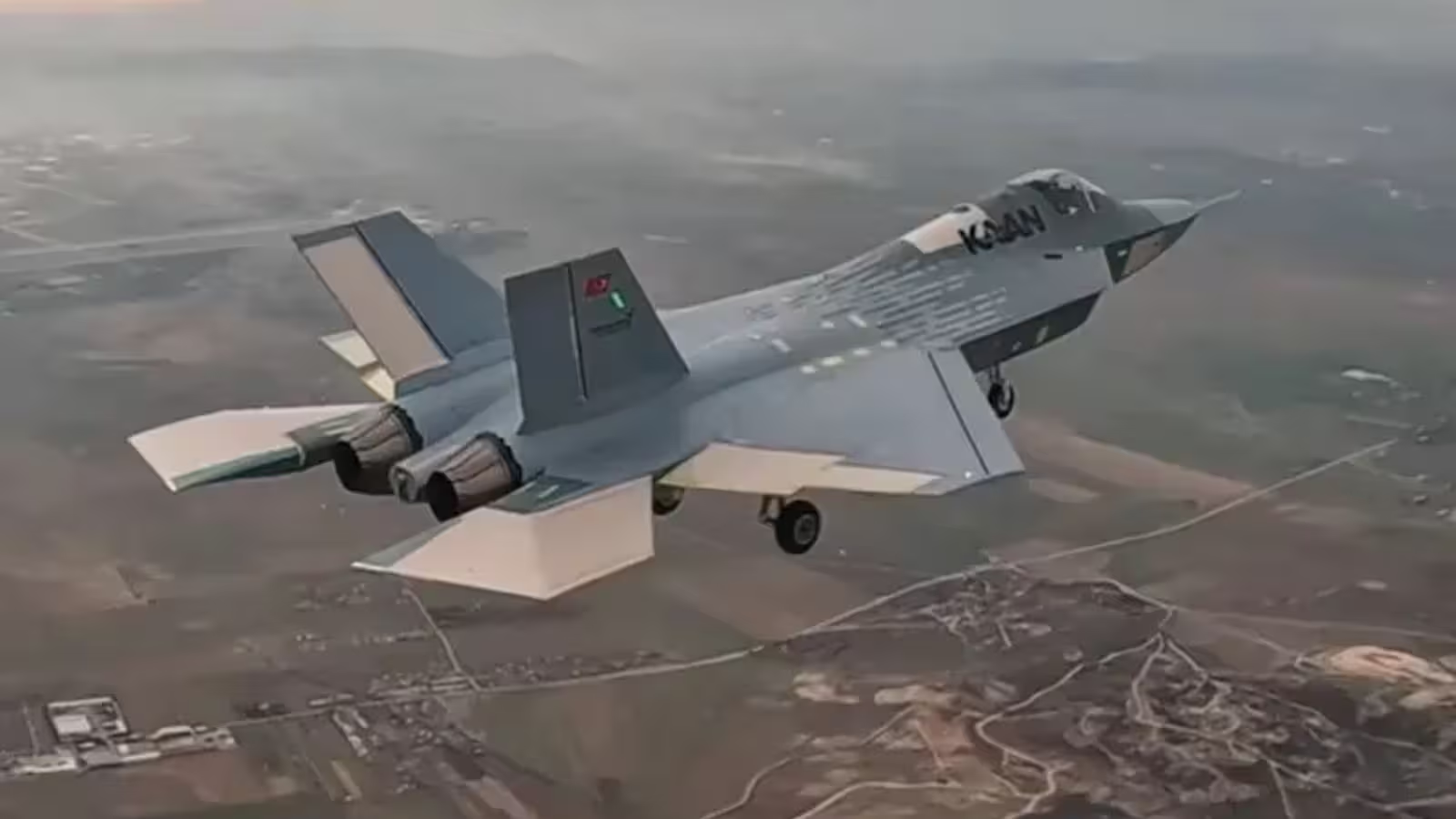8 Minutes
The Strategic Rise of the TAI TF Kaan: A New Era for Turkish Air Power
Turkey, often seen as the bridge between two continents, is solidifying its presence in international defense through technological innovation. The TAI TF Kaan, Turkey's next-generation stealth fighter jet developed by Turkish Aerospace Industries (TAI), stands out as a bold statement of the country's ambition to lead in the world of modern military aviation.
Beyond bolstering Turkey’s status within NATO, the TF Kaan marks the dawn of a new era where advanced stealth technology is no longer exclusive to major superpowers. As the global balance in aerospace and automotive technologies evolves, Turkey is positioning itself at the forefront with an aircraft that looks eerily familiar to enthusiasts of American stealth fighters, yet uniquely suited for Turkish strategic goals.
Historic Development: Tracing Turkey’s Path to Aviation Innovation
The foundation of Turkey’s air force stretches back over a century, with a lineage that began during the late Ottoman era. Following its establishment as the Turkish Air Force in 1920, Turkey rapidly pursued aerial strength, importing aircraft from the world’s leading manufacturers. From American Curtiss trainers to German Heinkel bombers, Turkey assembled a diverse arsenal which allowed the country to maintain regional air power throughout the 20th century.
World War II saw Turkey’s skies shared by P-40 Tomahawks, Hawker Hurricanes, and Focke-Wulf fighter aircraft. Post-war, Turkey’s critical alignment with NATO brought a stream of American-made jets, including the F-104 Starfighter and F-4 Phantom, which became longtime mainstays of its fleet. The Turkish Air Force’s current backbone, the F-16 Fighting Falcon, is a testament to this legacy—even as the highly modified F-4 Phantom "Terminator" continues to see combat service, upgraded with advanced technologies for 21st-century missions.
Design Evolution: From Experimental Concepts to an Advanced Stealth Fighter
The FX Program and the Road to TF Kaan
As Turkey looked toward the evolving threats and technological landscape of the 21st century, it launched the FX (Fighter Experimental) program to create an indigenous fifth-generation fighter. TAI explored several ambitious design concepts. One approached the F-16’s lineage—a single-engine, 4.5-generation platform. Another borrowed delta wings and canards, reminiscent of the Saab JAS 39 Gripen. However, the FX-1, a twin-engine stealth fighter with clear fifth-generation ambitions, became the preferred choice.

Observers quickly noted the TF Kaan's resemblance to the iconic F-22 Raptor. While all modern stealth jets share certain features—like angular surfaces to disperse radar waves—the Kaan and F-22 are remarkably close in silhouette and overall size. The Kaan measures 20.3 meters in length with a 13.4-meter wingspan, almost identical to the Raptor.
Engine Development: Overcoming Challenges
Originally, Rolls-Royce was tapped to provide the jet’s propulsion with its Eurojet EJ200 engines. However, differences over intellectual property and program access led TAI to rethink its approach. The end goal was always to develop Turkey’s own advanced jet engine capability in the long run. As negotiations with Rolls-Royce stalled, TAI selected the proven General Electric F110 turbofan—already familiar in Turkish F-16s and the F-15EX Eagle II—for its initial prototypes. Delivering 131 kN (29,000 lbf) of thrust at full afterburner, this engine is not only more powerful than previous options but also positions the Kaan for high performance straight out of the gate, promising speeds topping Mach 1.8 and a service ceiling of 16,764 meters (55,000 feet).
Cutting-Edge Technology and Advanced Cockpit
The TF Kaan brims with advanced aerospace technology. At its core is the MURAD AESA radar, a sophisticated active electronically scanned array, building on lessons learned from upgrades to Turkey’s fleet of F-16s. The cockpit is thoroughly modern, featuring a full glass panel and TULGAR helmet-mounted display for intuitive, data-rich control—a setup comparable to those in the F-22, F-35, or Russia’s Su-57. Infrared Search and Track (IRST), Electro-Optical Targeting Systems (EOTS), and the Directional Infrared Counter Measures (DIRCM) work together to spot, identify, and neutralize threats, even from the most advanced enemy missiles.
Weapon Systems and Multi-Role Capabilities
Where the TF Kaan truly stands apart is its highly adaptable weapons suite. The jet is capable of deploying a wide range of ordnance:
- Turkish variants of the Mark 81-84 series (250 to 2,000 lbs)
- Home-developed equivalents to the AIM-9 Sidewinder and AIM-120 AMRAAM air-to-air missiles
- AGM-130 and AGM-65 air-to-ground precision missiles
- Indigenously produced SOM cruise missiles
This array gives the Kaan true multi-role fighter abilities, allowing it to excel in both air superiority and strike missions. Its payload flexibility rivals that of the F-16, yet adds the low-observable edge that stealth technology brings. Unlike the F-22, which is optimized for air dominance but has a relatively narrow selection of ordnance, the Kaan can take on a broader range of missions, positioning it closer to the F-35's role within the US Air Force.
Market Positioning and Global Implications
Turkey’s pursuit of fifth-generation fighter capability was, in part, motivated by its exclusion from the F-35 program due to political frictions—especially its acquisition of the Russian S-400 air defense system. The TF Kaan is designed to fill that gap, both practically and strategically, ensuring the Turkish Air Force maintains technological parity with adversaries flying Russian and Chinese stealth platforms.
Preliminary tests of the Kaan prototype began in December 2023, an achievement swiftly followed the next day by the stealthy Anka-3 unmanned combat aerial vehicle (UCAV) from TAI, signaling a push toward networked, datalink-centric warfare. Like the F-35, the TF Kaan is envisioned as a core of a vast, interconnected combat ecosystem, poised to operate alongside drones and other assets in future battlespaces.
Performance Comparison: TF Kaan vs. Global Stealth Fighters
In terms of design and mission set, the TF Kaan bridges the gap between the F-22 Raptor’s air superiority specialization and the F-35 Lightning II’s multi-role prowess. Its radar-evading body, twin-tail configuration, and high-performance specs closely mirror the F-22. However, the flexible payload system and the intent for cooperative missions with UAVs and digital warfare networks are pure F-35.
Though development is ongoing, Turkey hopes the Kaan will soon become NATO’s third operational stealth fighter, joining the F-22 and F-35. This move is critical as fifth-generation Russian and Chinese fighters, such as the Su-57 and J-20, become increasingly prevalent, especially east of Europe.
Future Prospects: The Road Ahead for the Turkish Stealth Fighter
With a successful maiden flight in February 2024, the TAI TF Kaan is on track to begin full-scale production and deployment by 2030. As Turkey’s flagship next-gen fighter, it will be key to not only Turkish security but also NATO’s defense envelope in a rapidly changing geopolitical arena. Its anticipated integration with advanced datalink and UAV technologies will set new standards for future air combat—making the Kaan a symbol of Turkey’s sophisticated defense industry.
Conclusion: More Than Just an F-22 Lookalike
While the TF Kaan’s resemblance to the F-22 Raptor is striking, its true distinction lies in its adaptability and the strategic vision behind its development. Blending the best aspects of American stealth jets and customizing them for Turkish needs, the TF Kaan is poised to redefine what it means to produce a locally-built, high-performance fighter in the modern age. With the world watching, Turkey’s leap into fifth-generation aviation is shaping up to be a game-changer—not just in defense, but across the entire trajectory of military aviation technologies.
Source: autoevolution


Leave a Comment